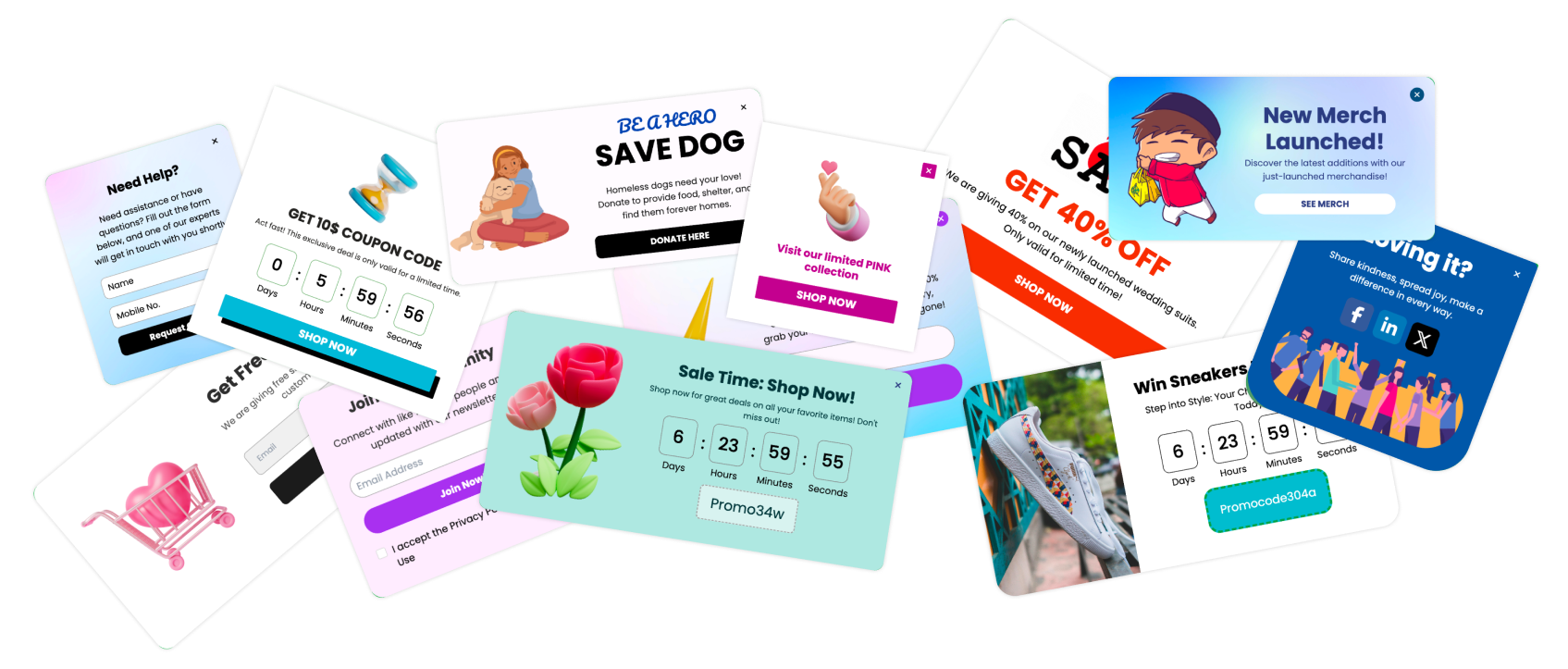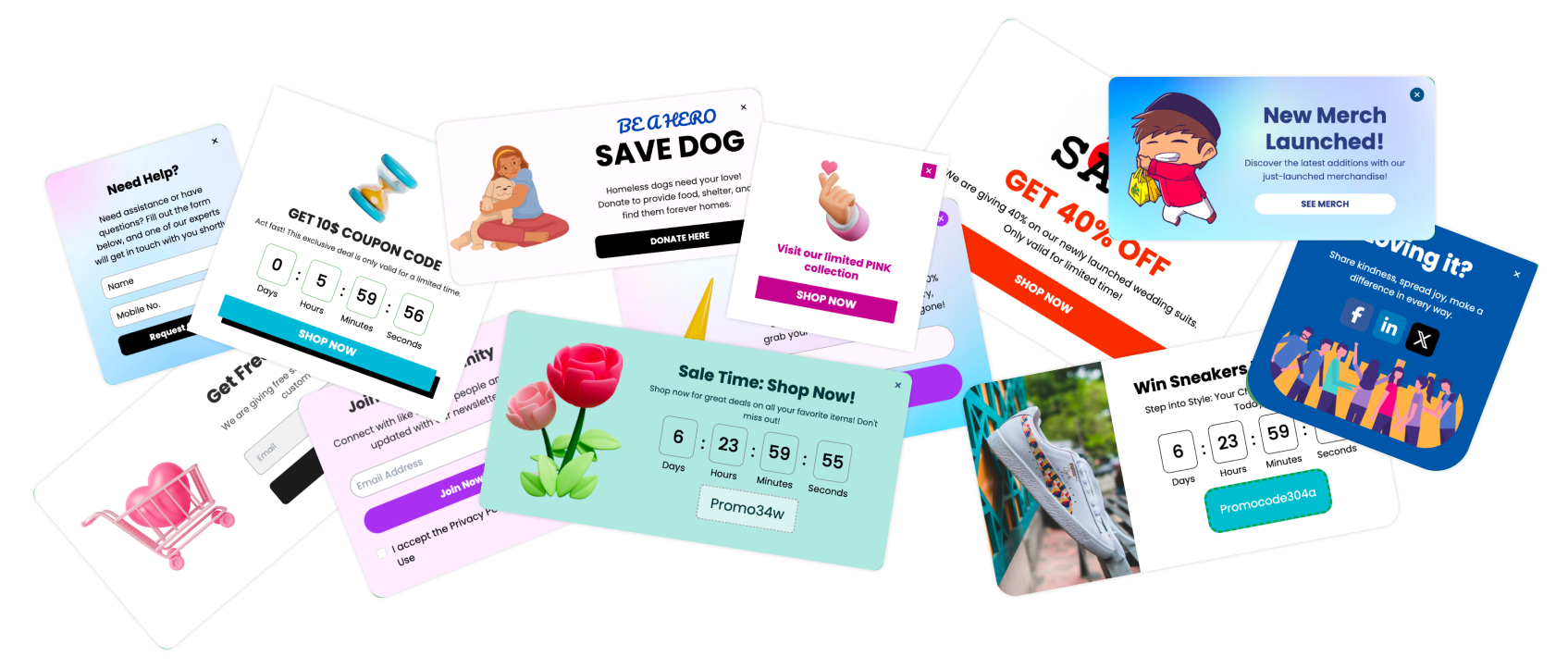I get it—when you're trying to grow your business, the number of tools available can feel overwhelming. You see names like Privy and Klaviyo everywhere, and it’s tough to know which one is actually the right fit for you.
My goal here isn’t to just sell you on Poper. It’s to give you a straightforward, honest comparison from my perspective as the person who designed our platform. I want you to choose the tool that will genuinely help you achieve your goals.
1. Let’s Talk About the Editor and Your Brand
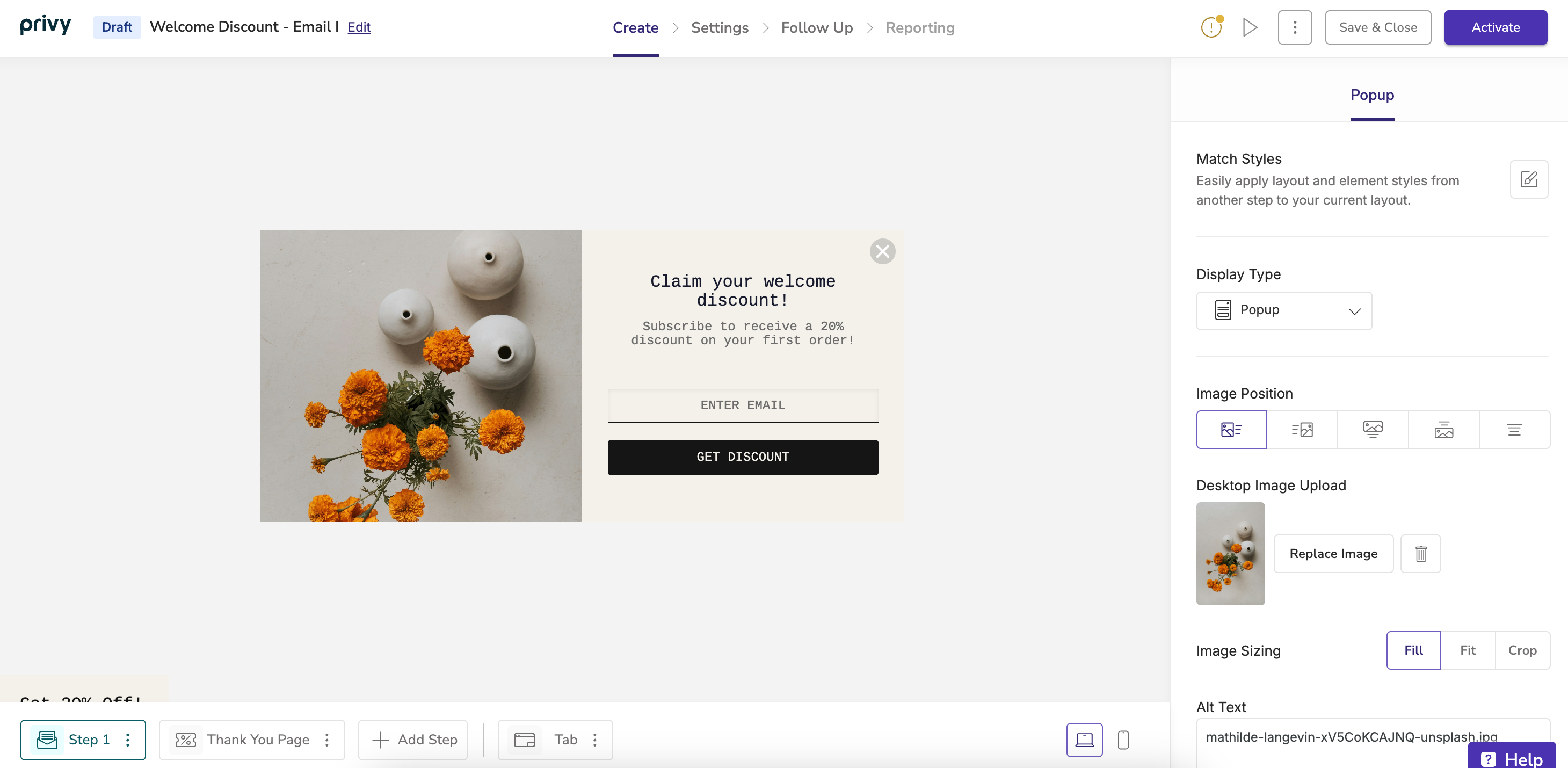
Privy offers a drag-and-drop editor, which is a good start. However, you’ll find that the customization options and the number of elements you can add are more limited. You can get the job done, but you might have to compromise on your design vision.
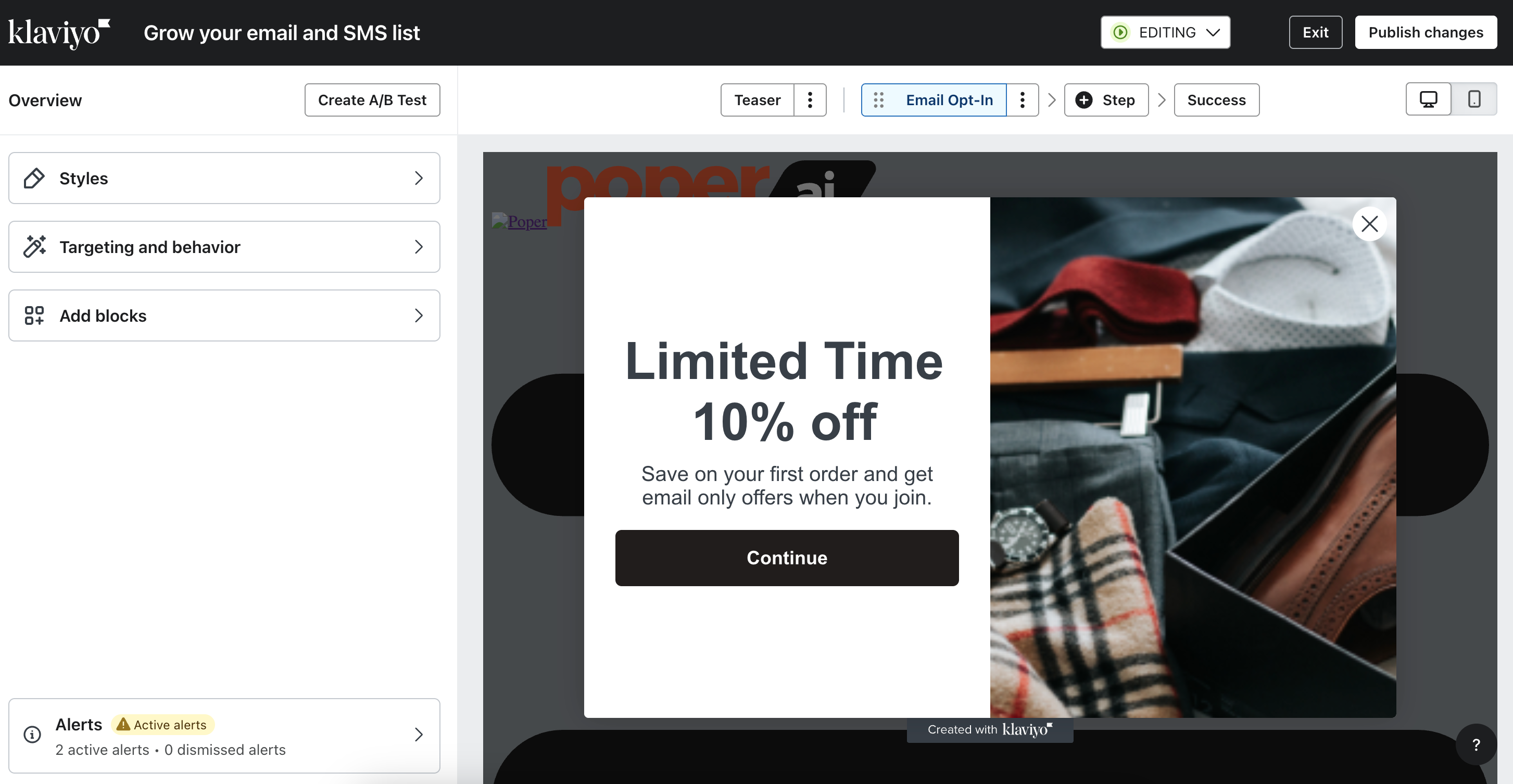
Klaviyo’s editor is the most rigid of the three. It’s primarily designed for basic edits like changing text, fonts, and colors within a fixed layout. If you just need something simple and fast, it works, but it's not built for creative control.
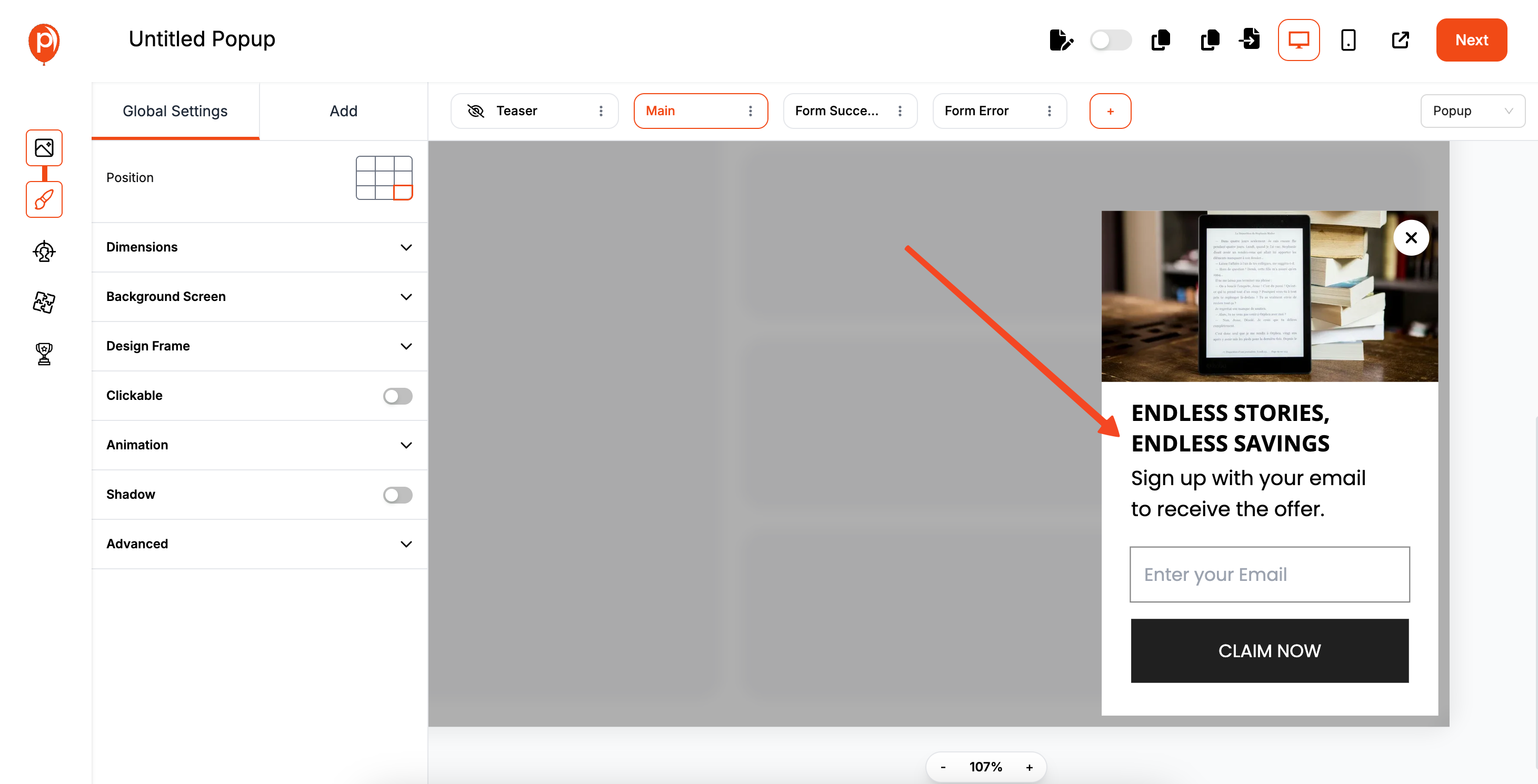
When we built the Poper editor, I had one main goal: to make it feel as simple and creative as Canva. You can drag and drop anything, anywhere. This freedom means your popups will match your brand perfectly, not look like a generic template that everyone else is using. If you're interested in more advanced popup design strategies, read our guide on using drag-and-drop editors for popups.
2. Integrations: Freedom or a Walled Garden?
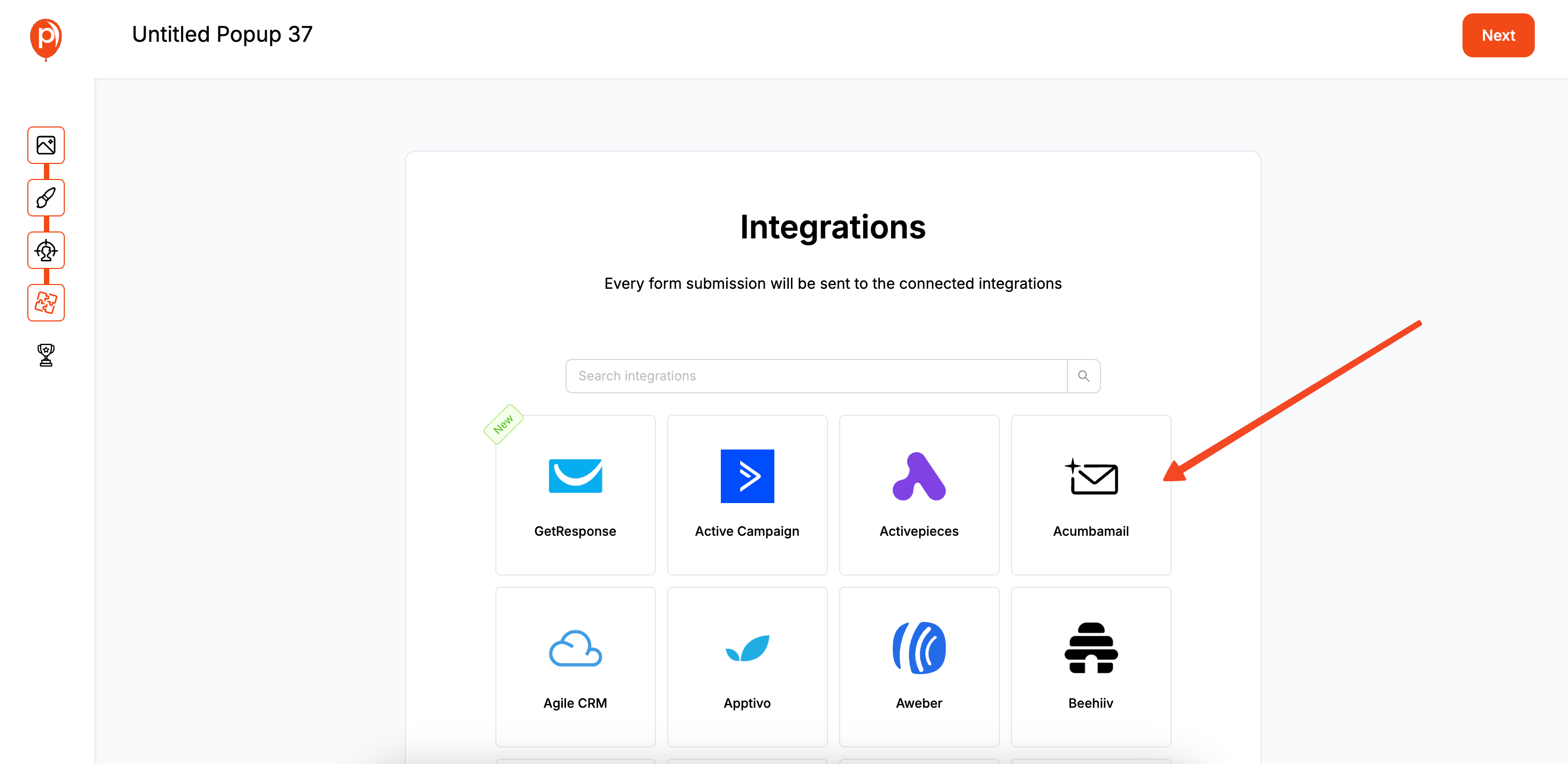
This is a big one. Your marketing tools should work together, and you should never feel locked into a single platform. With Poper, you can connect to over 100 different tools. If you use Mailchimp today but want to switch to ConvertKit tomorrow, your Poper forms will work seamlessly with both. Discover the full list of integrations available with Poper here.
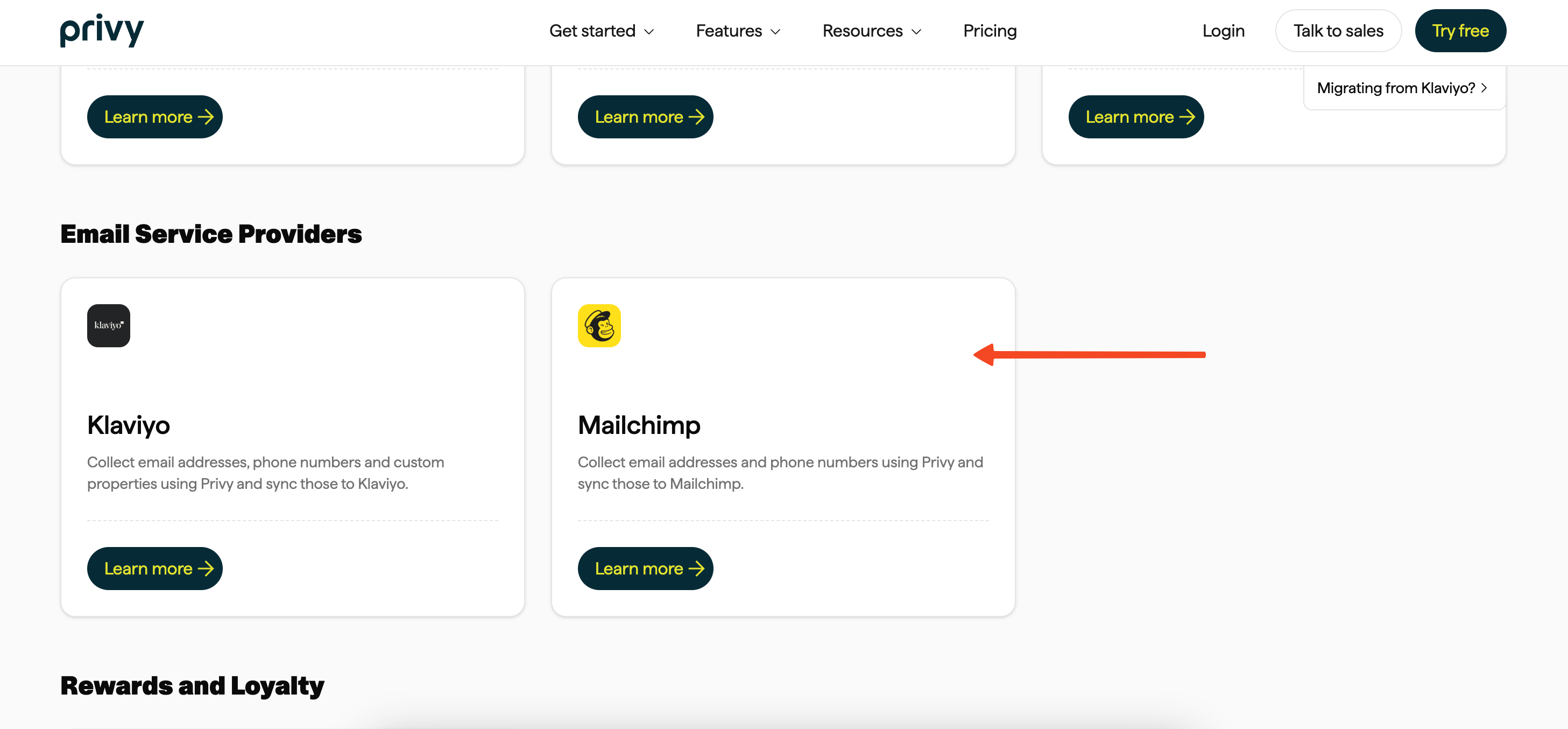
Privy also does a great job here, offering a range of integrations. This gives you similar freedom to build the marketing stack that works best for you. But there are very limited integrations in Privy.
Klaviyo operates differently. Its popups are designed almost exclusively to feed leads into the Klaviyo email platform. If you’re all-in on their ecosystem, it’s convenient. But if you ever want to use a different email service, you’ll have to replace your popups, too.
3. Targeting: Reaching the Right Person at the Right Time
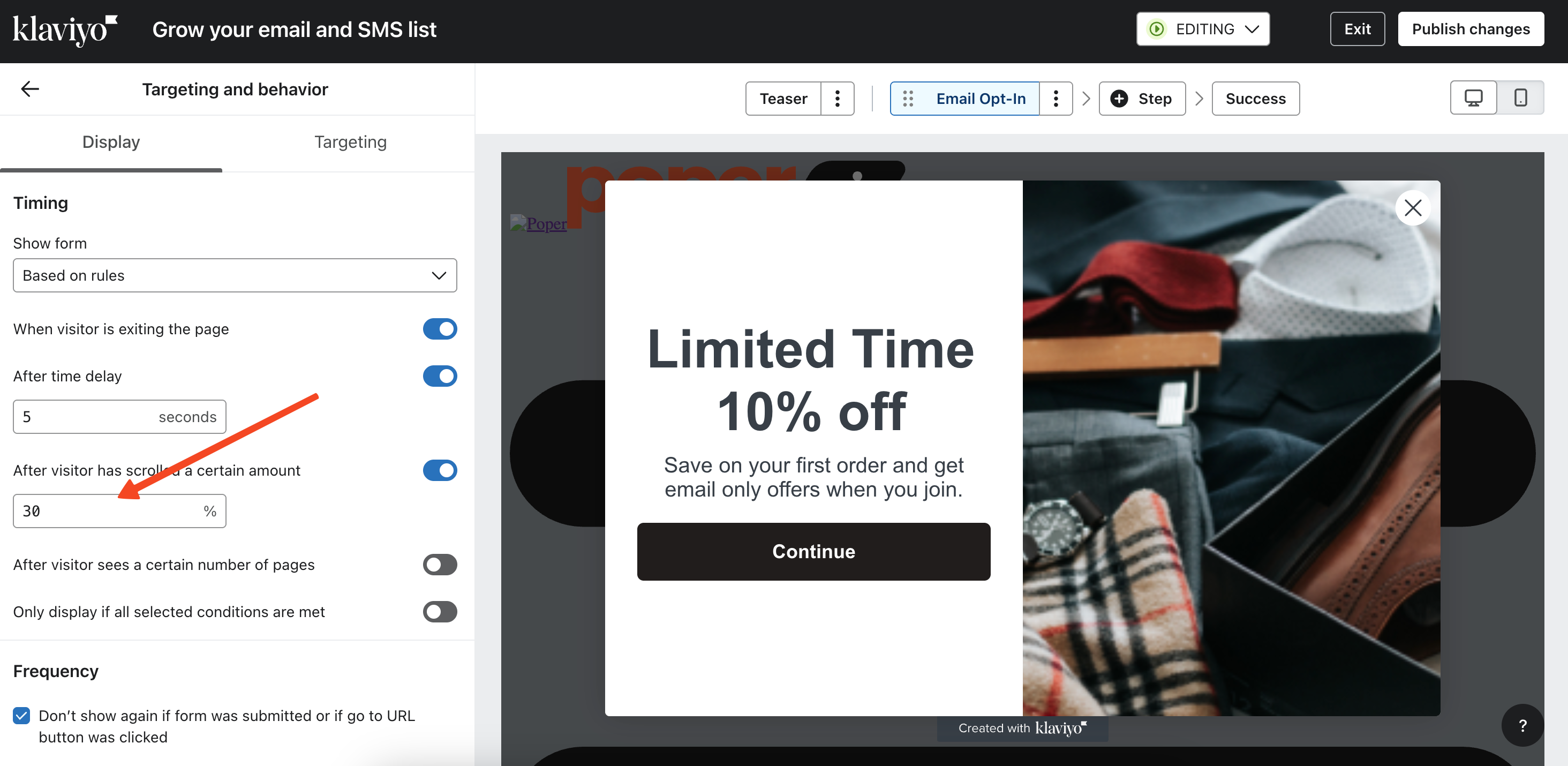
A popup’s success depends entirely on showing it to the right visitor at the perfect moment. In Poper, I made sure you had advanced triggers to do just this. You can launch a popup when someone clicks a specific button, when they are about to leave your site (exit-intent), or even target visitors based on their geographic location. For actionable techniques, see our article on on-click popups and how to use location-based targeting for popups.
For example, you could show a "Free Shipping in the US" banner only to visitors from the United States. This makes your message incredibly relevant and boosts conversion rates without annoying your international audience. Learn more about implementing country and language-specific popups.
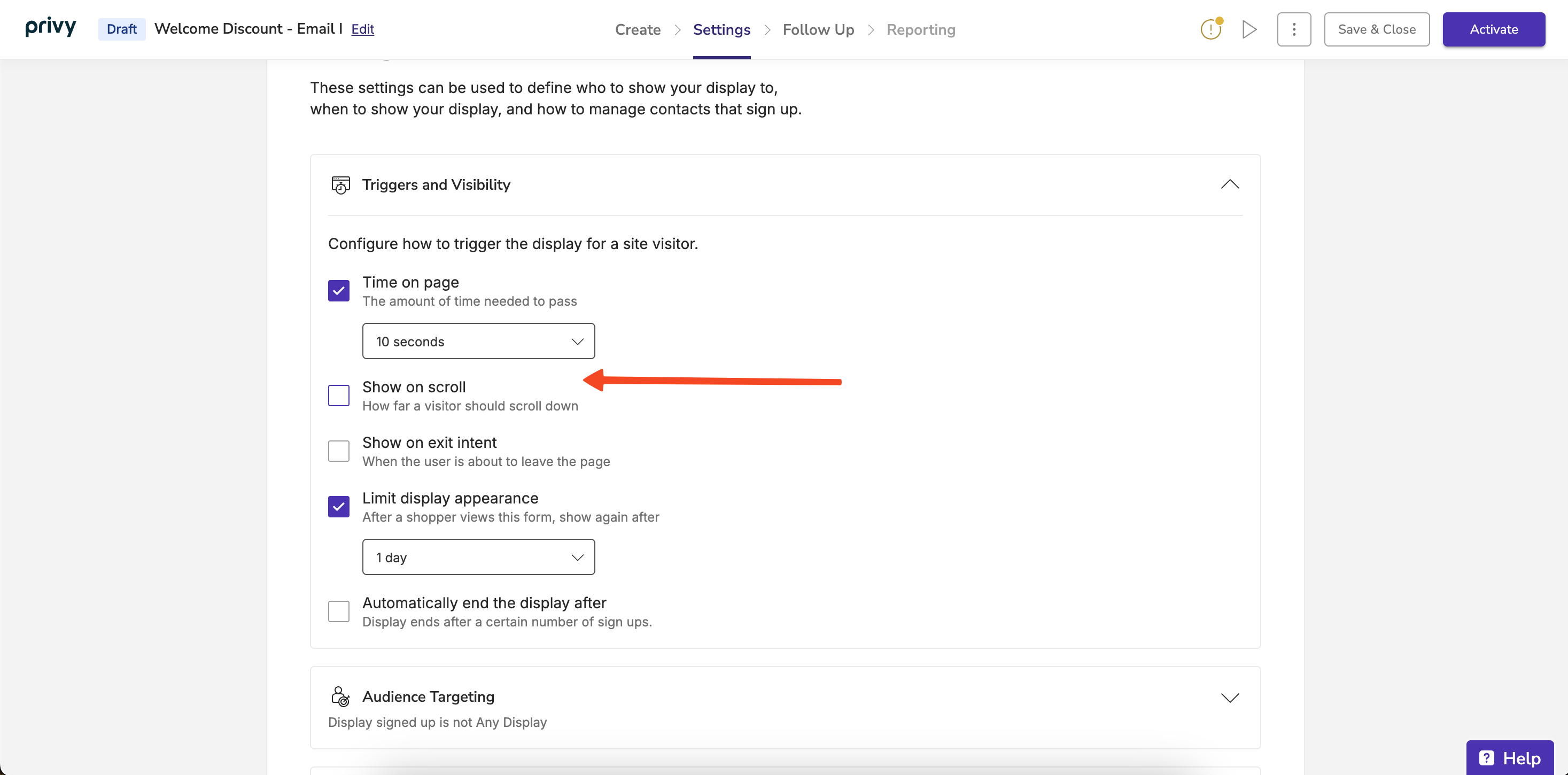
In Klaviyo and Privy, the targeting options are more basic. While you can set some rules, you generally lack the ability to use more advanced triggers like on-click events or the precise location-based targeting that gives you a competitive edge.
4. Beyond Popups: Using Embeds to Engage Everywhere
Your website is more than just a homepage. Sometimes you need a form or a call-to-action placed directly inside a blog post or on a specific page. That’s why we built embeds into Poper. You can easily create a testimonial block, a contact form, or a special offer and place it anywhere on your site. Get step-by-step instructions with our guide to creating website forms you can embed anywhere.
Klaviyo allows you to embed their standard forms, which is useful for lead capture, but it's not designed for the variety of interactive content you can build with Poper. As for Privy, this feature isn't a core part of their offering.
5. AI-Powered Copy: A Little Help When You Need It
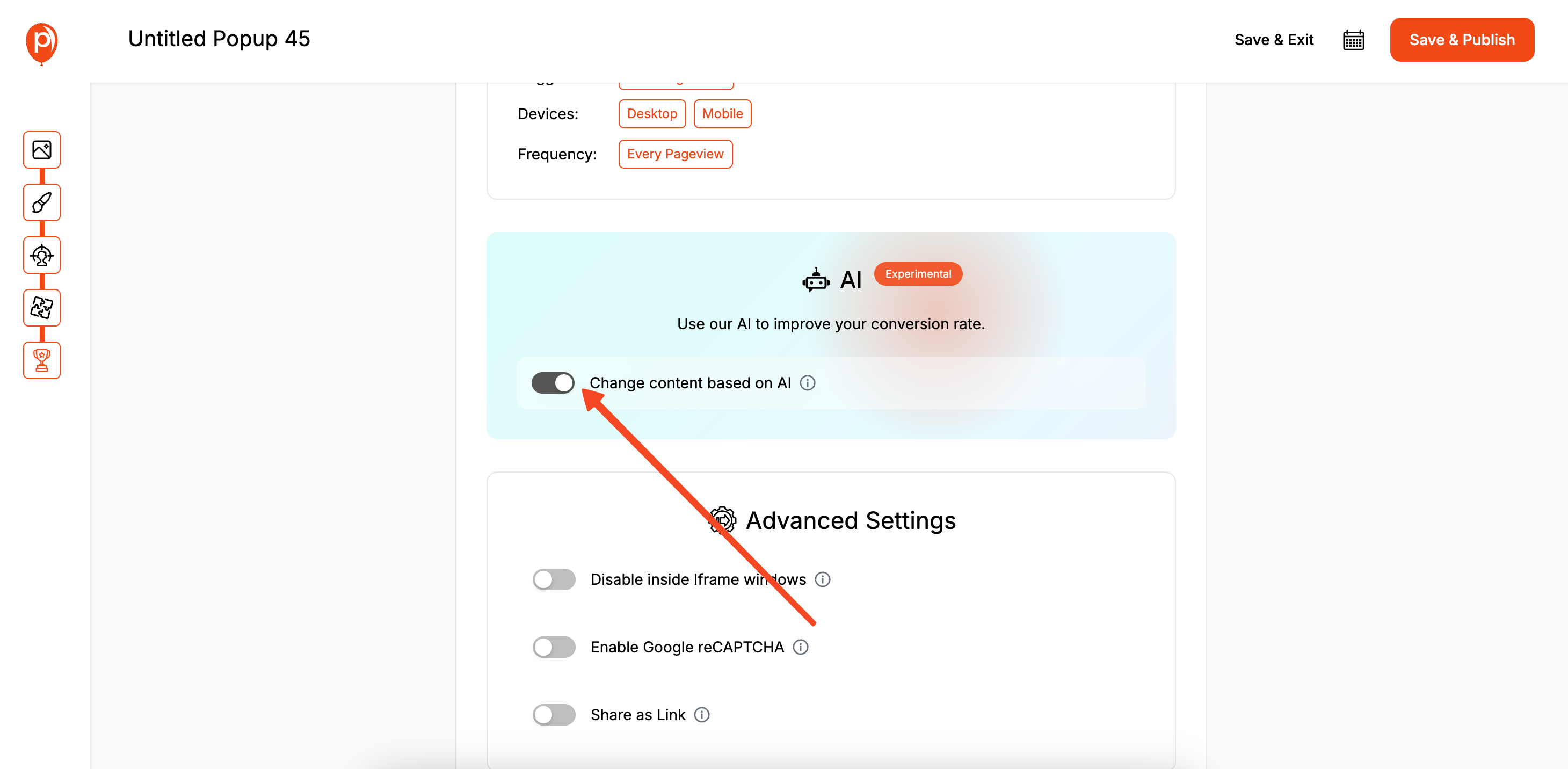
We’ve all stared at a blank screen trying to write the perfect headline. To help with this, we built an AI assistant right into Poper. It can suggest compelling copy for your popups, helping you get a great result faster. It’s about saving you time and giving you ideas when you’re stuck.
Neither Privy nor Klaviyo currently offers this kind of AI-assisted content creation for their popups.
Quick Comparison Table
To make things even clearer, here’s a simple table breaking down the key differences.
| Feature | Poper | Privy | Klaviyo |
| Design Editor | Highly flexible drag & drop | Limited drag & drop | Rigid template editor |
| Integrations | 100+ open integrations | Wide range of integrations | Locked into Klaviyo ecosystem |
| Advanced Targeting | Exit-intent, on-click, location | Basic triggers | Basic triggers |
| Embeds & Widgets | Yes, fully customizable | No | Yes, for basic forms |
| AI Content | Yes, built-in | No | No |
Making the Right Choice for Your Business
So, which one is for you?
If your business runs entirely on Klaviyo and you just need a simple form, their tool is a logical choice. If you're looking for a solid, entry-level popup tool with good integrations, Privy is a popular option.
But if you’re a business that values creative control, wants the power to show the perfect message to the right person, and needs the flexibility to work with any marketing tool you choose—that’s exactly why I built Poper.
Privy vs Klaviyo: A Head-to-Head Feature Comparison
Let's break down how these two platforms stack up in the areas that matter most to e-commerce businesses.
1. Popups, Forms, and On-Site Conversion Tools:
This is Privy's home turf.
Privy: Offers a very robust and user-friendly suite of on-site display tools. The drag-and-drop editor is intuitive, and it provides a wide variety of templates for popups, flyouts, banners, and even gamified popups like spin-to-win wheels. Its trigger and targeting options are extensive, making it a powerful tool for list growth and on-site promotions.
Klaviyo: Klaviyo's Sign-up Forms are solid and deeply integrated with its e-commerce data. You can create popups, flyouts, and embedded forms with good triggers like time delay, scroll, and exit intent. The targeting can be very powerful, leveraging Klaviyo's deep segmentation (e.g., target a popup to someone who has viewed a specific product category). However, its design editor is more structured and less of a free-form "drag-and-drop" experience than Privy's. It also lacks native gamified options like spin-to-win.
Verdict: For pure on-site conversion tools, Privy generally has the edge with its more flexible editor and built-in gamification.
2. Email Marketing & Automation:
This is Klaviyo's core strength.
Privy: Offers solid email marketing capabilities, including newsletters, automated emails (like welcome series and abandoned cart), and basic segmentation. It's a great all-in-one solution for small to medium-sized businesses that want to manage everything in one place.
Klaviyo: Is the industry leader in advanced e-commerce email automation. Its power lies in its incredibly deep segmentation and data analysis. You can build complex, multi-branching flows based on a vast array of customer behaviors (e.g., "viewed product," "placed order," "predicted gender"). Its reporting and analytics for email are also more granular and powerful than Privy's.
Verdict: For advanced, data-driven email marketing and complex automation, Klaviyo is the clear winner.
3. SMS Marketing:
Both platforms have strong SMS offerings.
Privy: Includes SMS marketing as part of its suite. You can use its popups to collect phone numbers for SMS and send broadcast campaigns or automated messages like abandoned cart reminders via text.
Klaviyo: Also has a deeply integrated SMS marketing platform. You can collect phone numbers via its forms and build SMS messages into your automation flows, allowing for powerful multi-channel (email + SMS) campaigns.
Verdict: This is a tie. Both offer robust SMS marketing that is well-integrated into their platforms. The choice may come down to which platform's overall ecosystem and pricing you prefer.
4. Integrations:
Privy: Integrates with a wide range of e-commerce platforms (Shopify, BigCommerce, etc.) and other marketing tools. It's designed to be a central part of your marketing stack.
Klaviyo: Also has best-in-class integrations, especially with Shopify, BigCommerce, and Magento. Its deep data syncing from these platforms is a key selling point.
Verdict: Both have excellent integrations. Klaviyo's depth of integration with major e-commerce platforms is arguably its strongest feature, but Privy also connects to what most businesses need.
5. Pricing:
Privy: Often seen as more accessible for smaller businesses. It has a free plan to get started with popups and offers tiered pricing based on the number of contacts and features (email, SMS).
Klaviyo: Is generally considered a more premium product, with pricing that can scale quickly as your contact list grows. It also has a free plan but with lower limits than Privy's starting tiers.
Verdict: For businesses just starting or on a tighter budget, Privy's pricing is often more approachable. For larger, data-heavy businesses, Klaviyo's price is often justified by its powerful features.
Summary Table: Privy vs Klaviyo
| Feature | Privy | Klaviyo |
| Core Strength | On-Site Conversion (Popups, Banners) | Advanced Email & SMS Automation (Data-driven) |
| Popup Editor | Flexible drag-and-drop, gamification | Structured, powerful targeting |
| Email Automation | Good, solid features for most needs | Excellent, industry-leading segmentation |
| SMS Marketing | Yes, fully integrated | Yes, fully integrated |
| Pricing | More accessible, good starting plans | Premium, scales with list size |
| Best For | SMBs wanting an all-in-one conversion and email tool, or those prioritizing popups. | Data-driven stores needing advanced segmentation and complex email flows. |
The Poper Alternative: A "Best-of-Breed" Approach
What if you want the best of both worlds? The industry-leading email automation of Klaviyo, but with on-site conversion tools that are even more flexible and creative than Privy's? This is where a specialized, "best-of-breed" tool like Poper comes in.
Poper focuses on doing one thing exceptionally well: creating any kind of popup, widget, or banner you can imagine, with total design freedom and advanced targeting, and connecting it to any tool you want.
Why Choose Poper Alongside Klaviyo or Privy?
Ultimate Design Freedom: Poper's editor is designed to be as intuitive as Canva. You can drag and drop anything, anywhere, ensuring your popups perfectly match your brand, not a pre-defined template structure.
Advanced Targeting: Poper offers triggers and targeting that often go beyond native platforms, including on-click triggers and precise geo-location targeting (e.g., "Show free shipping banner only to visitors in the UK").
No Platform Lock-In: Poper is platform-agnostic. You can create a popup today and send leads to Privy. If you migrate to Klaviyo next year, your Poper popups stay live—you just switch the integration. You never have to rebuild your on-site campaigns.
Richer Data Collection: Build forms in Poper with custom fields, dropdowns, and radio buttons to collect more valuable zero-party data and send it to custom properties in Klaviyo or Privy.
AI-Powered Copywriting: Get help writing compelling headlines and copy for your popups with a built-in AI assistant.
The Strategy: Use Klaviyo for its world-class email/SMS automation and use Poper as your specialized, best-in-class tool for on-site popups and lead capture. This gives you the most powerful combination.
Final Recommendation: Privy vs Klaviyo?
The choice depends on your business's primary focus:
Choose Privy if: Your main priority is powerful on-site conversion tools (popups, spin-to-win) and you want a solid, all-in-one email and SMS platform to support that. It's an excellent, cost-effective choice for many small to medium-sized businesses.
Choose Klaviyo if: Your core strategy revolves around sophisticated, data-driven email and SMS marketing. You need to build complex automation flows based on deep customer segmentation. Its sign-up forms are powerful enough to fuel this primary mission.
Consider adding Poper if: You choose Klaviyo (or even Privy) but find you need more creative control, more advanced targeting for your popups, or you value the long-term flexibility of a platform-agnostic conversion tool.
By understanding their origins and core strengths, you can make an informed decision and build the marketing stack that will best drive your growth.
Frequently Asked Questions (FAQ)
Can I use Privy just for popups and Klaviyo for email?
Yes, this is a very common strategy. Many businesses use Privy as their on-site conversion tool and integrate it to send all captured emails and data directly to their Klaviyo account for marketing automation.
Which platform is better for a beginner?
Both platforms have a learning curve, but Privy is often considered slightly more user-friendly and intuitive for beginners, especially for setting up the initial on-site popups.
Does Klaviyo have spin-to-win popups?
No, Klaviyo does not have a native gamified spin-to-win feature. This is a core feature of Privy and is also available in specialized popup tools like Poper.
Which is more expensive, Privy or Klaviyo?
Q4:
A: Generally, Klaviyo becomes more expensive as your list grows. Its pricing is based on contact numbers and email/SMS volume. Privy often has more accessible entry-level plans, making it attractive for businesses on a tighter budget.Can I migrate from Privy to Klaviyo?
Q5:
A: Yes. You can export your contact list from Privy and import it into Klaviyo. However, you would need to rebuild any email automations and all of your on-site popups and forms natively in Klaviyo (or use a tool like Poper for the popups).

